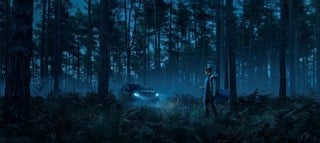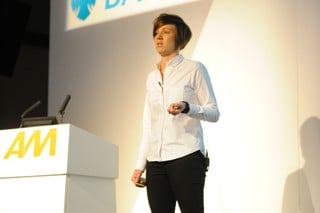Review
Volume production of the new Range Rover, which goes on sale on 15 February, has started at Land Rover's solihull plant, on a new production line.
More than £200 million has been invested in the factory to ensure the highest quality standards.
“We believe the new Range Rover is the world's most capable vehicle, with the greatest breadth of ability of any vehicle ever made," said Land Rover's chairman and chief executive officer Bob Dover. “This mixture of peerless off-road ability combined with on-road excellence should satisfy the most demanding luxury car buyer.”
Among the new Range Rover's key features are an all-new stiffer monocoque body with integrated chassis, and all-round independent suspension with interconnected air springs. Solihull's new star also has an advanced automatic transmission and transfer gearbox with a low-range Steptronic facility and the ability to shift from low to high ratio on the move.
Longer and taller than the previous model, the new Range Rover has correspondingly more interior space while greater ground clearance also helps improve the off-road performance.
New 4.4-litre V8 petrol and 3.0-litre common rail six-cylinder turbodiesel engines mean better performance, lower emissions, improved fuel economy and greater refinement, while state-of-the-art five-speed fully electronic automatic transmissions – standard in petrol and diesel versions – provide both fully automated and Steptronic manual shifts.
As with the original Range Rover, launched in 1970, the third-generation model has permanent four-wheel drive and a two-speed transfer gearbox offering a low range for off-road use and a high range for normal driving. A new torque sensing centre differential continuously and automatically changes the torque bias between front and rear axles depending on available traction.
It is now possible to shift from high to low ranges (and vice versa) on the move.
The chassis also features a number of electronic traction control systems including Dynamic Stability Control (DSC) and the Land Rover-pioneered Hill Descent Control (HDC). The standard anti-lock brakes (ABS) are supplemented by Emergency Brake Assist (EBA) and Electronic Brakeforce Distribution (EBD).
The vehicle's interior has been completely redesigned. Three decorative finishes – traditional burr walnut, avant-garde cherry and sporting foundry – mix with seven seat colours, four lower trim colours and two upper trim shades to allow customers to choose a bespoke interior. Other features include two different leather treatments and chrome dashboard detailing.
Interior equipment available include an integrated telecommunications package including telephone system with cordless in-car handset, satellite navigation with off-road functionality, and an in-dash widescreen TV.
Other features include Bi-Xenon headlights, providing high intensity 'blue' light on both dipped and main beam, and LED brake lights giving following motorists early warning that the car is slowing.
Factsheet
No information available.
















